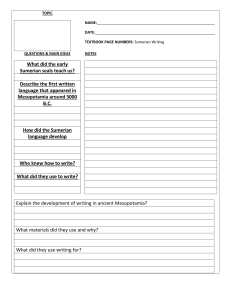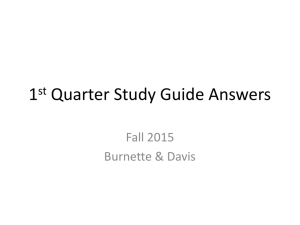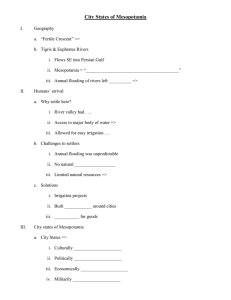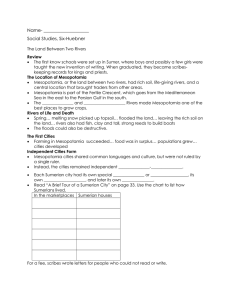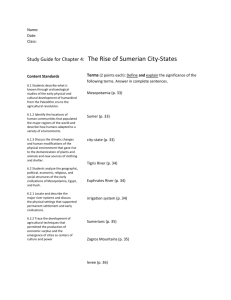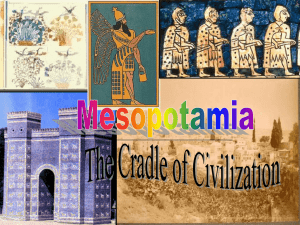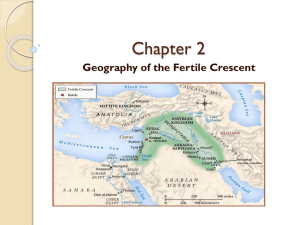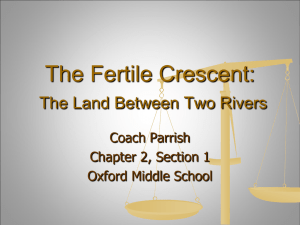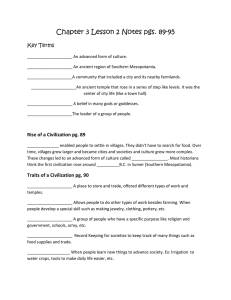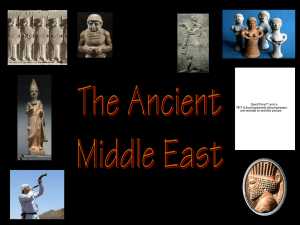Mesopotamia
advertisement
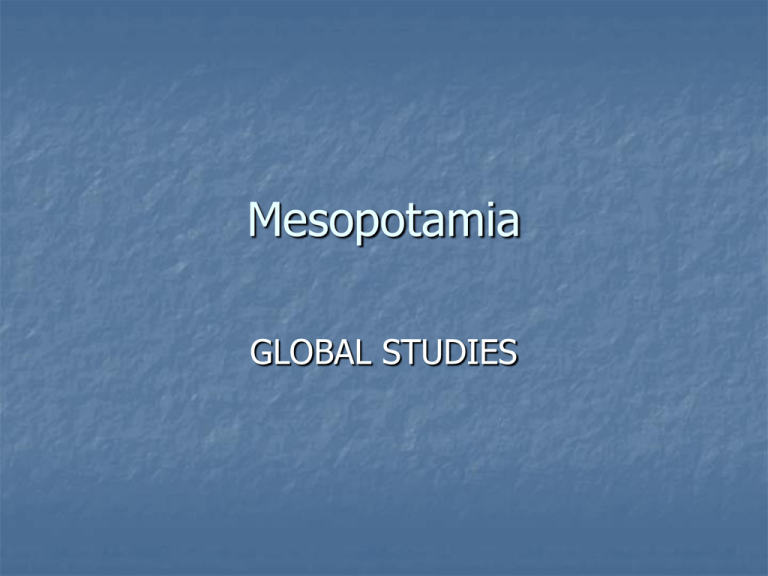
Mesopotamia GLOBAL STUDIES Mesopotamia Mesopotamia Mesopotamia means: “land between two rivers” Civilization developed between the Euphrates and the Tigris Rivers By 3000 B.C. a number of cities are established by the Sumerians Role of the Environment Created in a region that agriculture is possible- IMPORTANCE? Irrigation and drainage possible- HOW? Forced people to work together and formed communities Role of the Environment Rivers supplied basics for existence food water sanitation Also provided for shelter How? basics of building? Role of the Environment Problems with living near a river valley? Destroyed by frequent floods that ravaged entire cities restrained political development (Sumer was a geographical maze) Communication amongst the various isolated cities was very difficult Invention of Writing Origins of Writing probably go back to the ninth millennium B.C. 4th millennium- realized that drawing tokens was easier than making tokens Result was the development of cuneiform: “wedge-shaped” pictographic system Cuneiform Sumerian Society Sumer was different from all other earlier civilizations Advanced cities Specialized workers Complex institutions Record keeping Advanced technology Developed city-states Food surplus increased population expanded trade expansion of Sumerian society Sumerian Society Polytheistic Wrote myths (Epic of Gilgamesh) Had social classes Priests and kings were at the top Slaves were at the bottom Women probably couldn’t attend school but had many other rights Advances in mathematics Number system based on 60 (60 seconds=1 minute) Sumerian Inventions Wagon wheel Potter’s wheel (shape containers) Number system 12 month calendar Metal plow Sail Some of the earliest known maps New architecture
